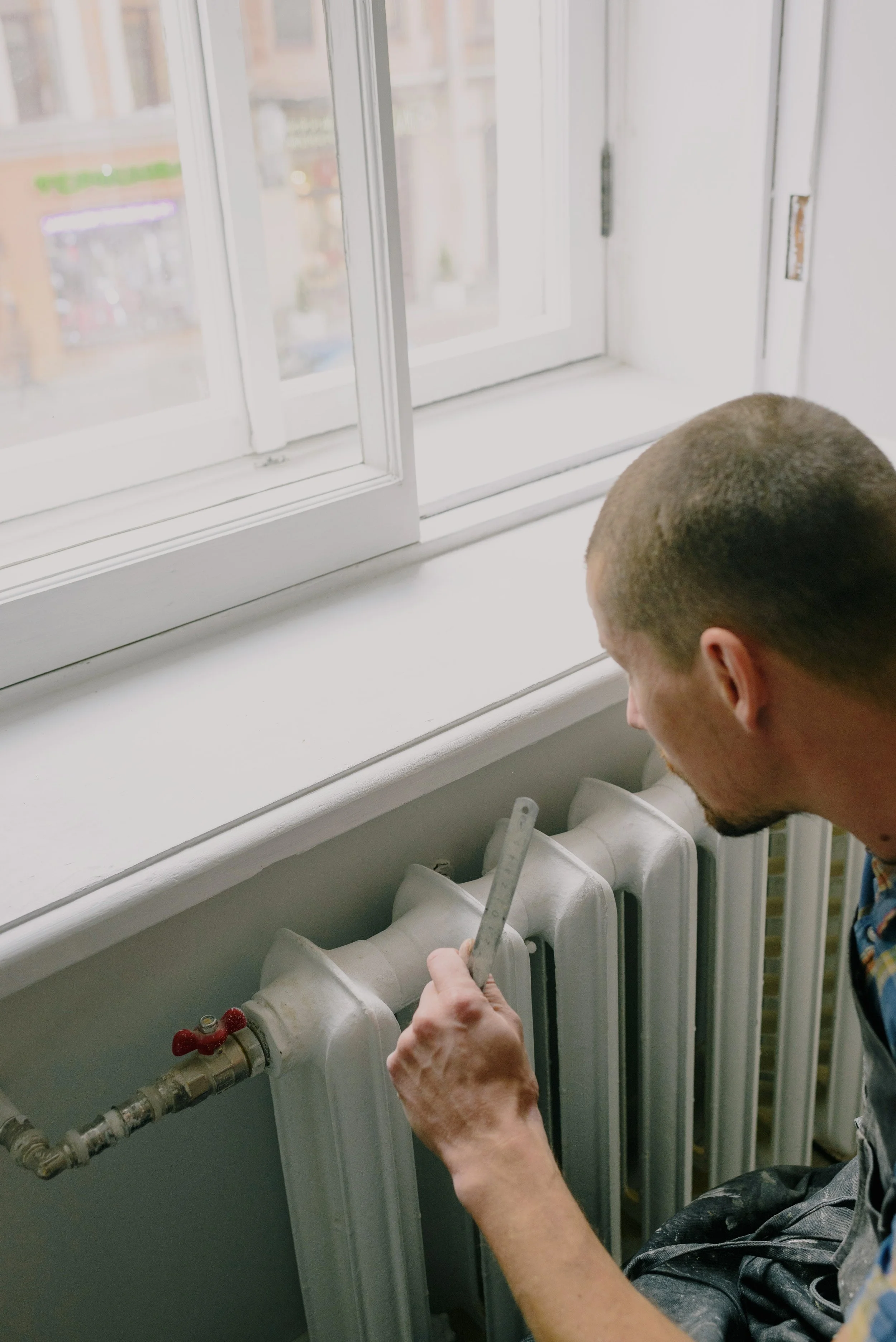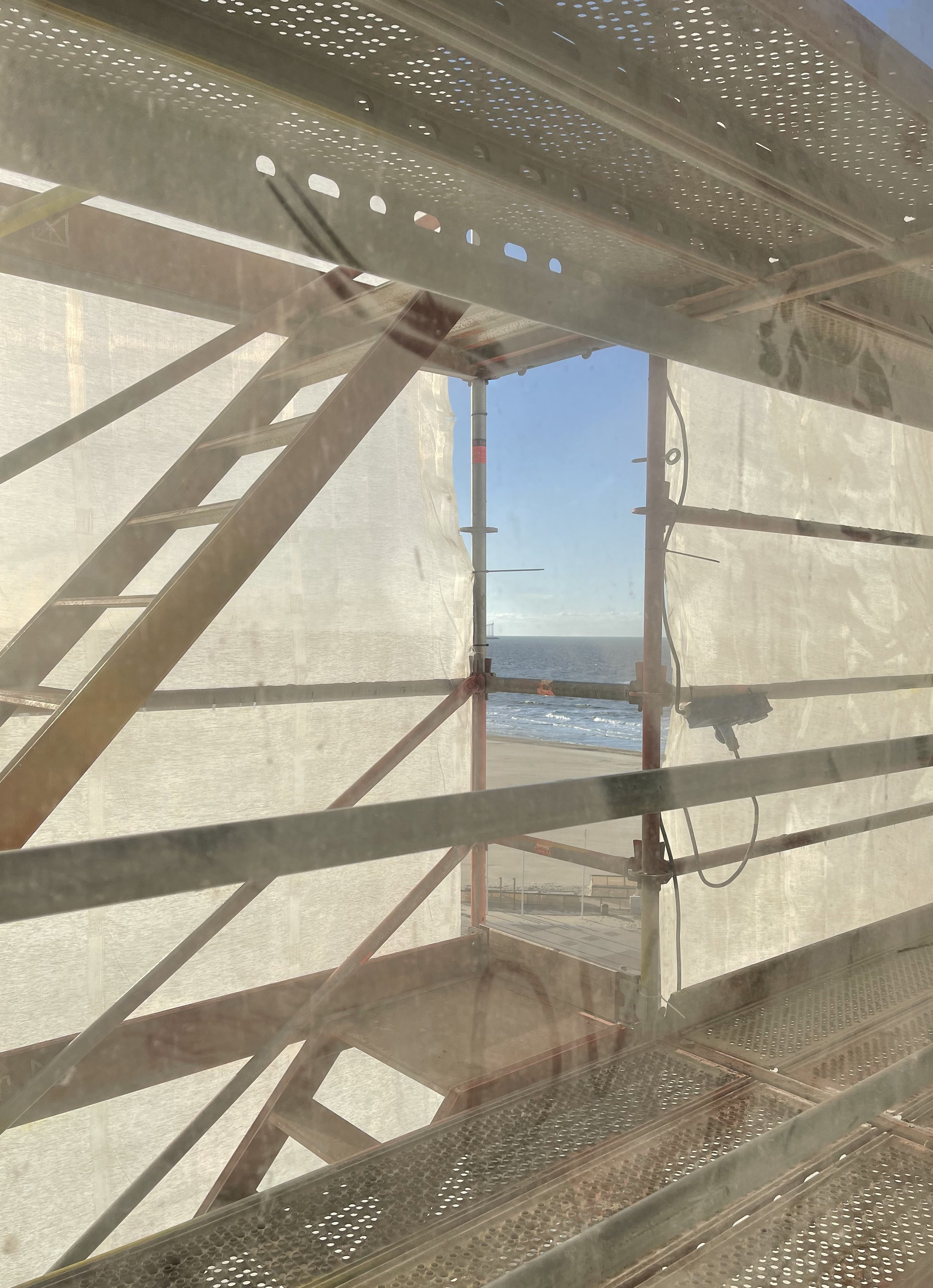One renovation leads to more possibilities
This renovation project of a 1979 residential building was prompted by the deterioration of the underground parking garage, where the concrete had degraded such that it compromised the building’s structural integrity. As we studied the building and renovation opportunities—and as the owner’s priorities shifted—the project developed into a comprehensive phased renovation. Beyond repairing the parking garage, the renovation plan also replaces the facade with a more high-performing and aesthetically distinguished one. It also enhances the outdoor space, making quality-of-life improvements, including a new open-use common area with seating and native plantings.
The project received a building permit in late 2021 and is currently out to bid, with construction anticipated to begin in the summer.
Initial study and approach planning
Our initial survey studied the extent of the damage to the underground garage and revealed the cause was water infiltration through the landscape above. We also studied the damage to the facade concrete and identified how much concrete would need repair or replacement. Moreover, we discovered the building was non-compliant with current fire safety, emergency access, and energy efficiency regulations. Our structural analysis of the garage indicated that it would need to be reinforced to achieve the stability required for emergency vehicle access, as these routes would cross over the garage.
We considered several options to repair the damage, improve energy efficiency, bring the building up to fire exit and emergency access compliance, and make quality-of-life improvements. To repair the garage, we first considered replacing the entire ceiling, but found that would be too expensive to be feasible. We discovered a more cost-effective solution that moves access 1 m away from the garage, makes spot repairs to the damaged concrete, reinforces its structure, and adds a water- and root-resistant enclosure atop it. This also opened up the potential to make strategic changes to the outdoor spaces that significantly improve building aesthetics and tenant quality of life.
For the facade, we determined that a careful restoration of the balconies could repair the damage, enhance thermal performance, and prevent future deterioration—allowing us to avoid the expensive process of completely replacing them. Rather than integrating a new fire exit into the existing building, we found it was more cost-effective to build a small addition housing the fire stairs. This approach also allowed us to lend the building a more contemporary look-and-feel with a new architectural intervention.
We broke up this plan into three phases to ensure the renovation was feasible and cost-effective.
Phase I—Underground garage repair and landscaping
The first phase repairs and structurally reinforces the underground garage and redesigns the landscape above to prevent future water infiltration. The new garage enclosure is root-resistant and has a continuous waterproofing membrane and updated drainage pipes that make water management efficient and controllable. On top of this, we designed a green roof that retains water and encourages dense growth of grasses, flowers, and shrubs. The garage renovation also made paint and interior refurbishments and added an updated ventilation system and fire sprinkler system.
Building section, underground garage and landscape
Phase II—Facade replacement and addition
The second phase replaces the facade with a high-performing, energy-efficient one and incorporates additional fire exit routes in a building extension. We used these changes as opportunities to make aesthetic improvements. The addition is designed as a rounded metal box stair structure that adds fire escape routes cost-effectively and acts as an architectural insertion that lends a contemporary edge to the post-war building. The aluminium cladding is light and reflects the green colours of the surrounding landscape, blending and embedding the building with its context.
This phase also replaced the old windows with better-insulated ones, repaired exterior concrete, renewed terrace surfaces and balustrades, and added new rainwater pipes. The penthouse and roof were reskinned with sloping insulation, waterproofing membranes, and outfitted with new chimneys.
Visuals of the fire escape staircase
Detail of the fire escape staircase
Phase III—Outdoor space, ecological improvements, quality-of-life enhancements, and emergency vehicle access
The third phase redesigns the outdoor areas surrounding the building. The design creates a social landscape that functions as an open-use gathering space, improves tenant quality-of-life, makes a more robust ecosystem, optimizes groundwater management, adds emergency vehicle access routes, and creates wheelchair accessibility. Our plan redefines the entrance zone to the building, creating a seamless transition between the public domain and the surrounding landscape. By changing the configuration of the parking, a buffer zone between the parking and the building is introduced, doubling as a communal space and playground for children.
To accommodate car parking without paving the entire site, we designed a non-hierarchical landscape that doubles as a communal space and playground for children. The design creates a buffer between parking and the building, a connective landscape that invites people to hang out and to find their own paths from the parking area to the building. Pixelated pavers embedded into the ground allow grass to grow between them, creating a space halfway between landscape and hardscape parking lot. The result is an inviting, green space where children can play during the day.
New flower boxes and native plantings give a measure of privacy to the ground floor apartments. More than 40 metres of bench seating was added, creating places for tenants to gather outdoors. The benches incorporate ventilation shafts, improving building performance without marring the visual quality of the outdoor space.
The landscape also drastically improves stormwater management to prevent flooding and sewage overflows. We incorporated a wadi system to capture excess rainwater from the roof. The wadi system is a type of ditch in the landscape with layers of soil, gravel, and sand to retain water and regulate infiltration. The wadi also reinforces other quality-of-life improvements, since it fosters the growth of a tall line of dense grasses and flowers that add beauty to the landscape and contribute to the local ecosystem.

Why redevelopment?
A building is never truly finished; it can always be re-adapted and transformed to take upon a new form or function. Recycling architecture has been a common practice throughout history, and in many cases, it has led to the preservation of a large part of our current cultural heritage. Read more.

That's the way the concrete crumbles
Early 20th-century engineers thought reinforced concrete structures would last a very long time – even up to 1,000 years. In reality, their life span is significantly shorter, depending on the quality of the production and maintenance.

The story behind redevelop
“It takes 65 years for a new energy-efficient building to save the amount of energy that an adaptive reuse project does. redevelop is a strategic design firm that develops and implements sustainable strategies to develop post-war buildings for contemporary use.”

Heating and cooling efficiency
Heating and cooling in buildings and industry take the lead in the EU’s total energy consumption. Notably, 75% of heating and cooling is still generated from fossil fuels. As such, they play a crucial role in a country’s transition towards greater energy efficiency and decarbonization.







